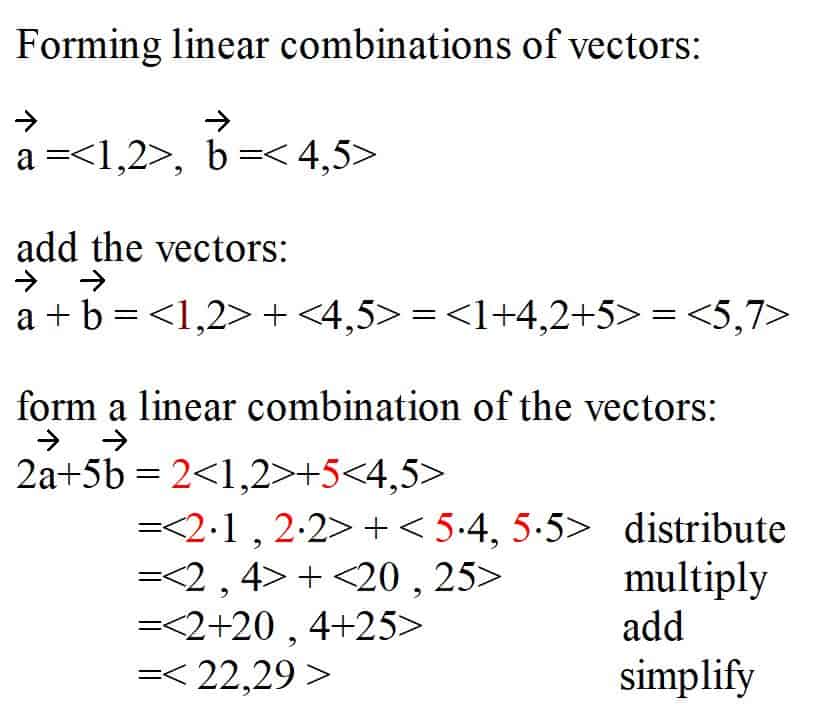Forming a Linear Combination of Two 2D Vectors: A Step-by-Step Guide
Step 1: Define the Vectors
Math: v = (3, 4), w = (1, 2) | Explanation: Define two 2D vectors v and w with given components for forming a linear combination of two 2D vectors.
Step 2: Define the Scalars
Math: a = 2, b = 3 | Explanation: Define the scalars a and b that will be used to form the linear combination.
Step 3: Multiply the Vectors by the Scalars
Math: a * v = 2 * (3, 4) → (6, 8), b * w = 3 * (1, 2) → (3, 6) | Explanation: Multiply vectors v and w by the scalars a and b, respectively.
Step 4: Add the Scaled Vectors
Math: a * v + b * w = (6, 8) + (3, 6) → (9, 14) | Explanation: Add the scaled vectors to form the linear combination.
Conclusion
The linear combination of the vectors (3, 4) and (1, 2) with the scalars a = 2 and b = 3 is (9, 14). This step-by-step guide illustrates the process of forming a linear combination of two 2D vectors, a fundamental concept in linear algebra.

Linear Combination of 2D Vectors Using Scalars: A Detailed Example
Step 1: Define the Vectors and Scalars
Math: u = (5, 7), v = (2, 3), c = 4, d = 3 | Explanation: Define two 2D vectors u and v, and scalars c and d for the purpose of linear combination of 2D vectors using scalars.
Step 2: Multiply the Vectors by the Scalars
Math: c * u = 4 * (5, 7) → (20, 28), d * v = 3 * (2, 3) → (6, 9) | Explanation: Multiply vectors u and v by the scalars c and d, respectively.
Step 3: Add the Scaled Vectors
Math: c * u + d * v = (20, 28) + (6, 9) → (26, 37) | Explanation: Add the scaled vectors to form the linear combination of 2D vectors using scalars.
Conclusion
The linear combination of the vectors (5, 7) and (2, 3) with the scalars c = 4 and d = 3 is (26, 37). Understanding the linear combination of 2D vectors using scalars is essential in various mathematical and engineering applications.

